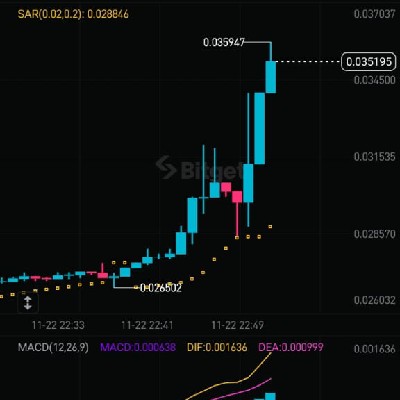
BANK (Ordinals)の価格BANK
BANK (Ordinals)の市場情報
現在のBANK (Ordinals)価格(JPY)
2025年12月15日の暗号通貨市場は、重要な規制の進展、進化するマクロ経済要因、そして重要なプロジェクトの発展によって形成されたダイナミックな風景です。主要な暗号通貨が価格の統合期間を乗り越える中、基盤となるインフラは成熟を続けており、投資家にとっての課題と機会の両方を示唆しています。
価格の変動の中で明らかになる規制の明確性
2025年後半の最も明確なテーマの1つは、世界の司法管轄区域における規制の明確性の加速するペースです。米国は特に活発で、二党間の努力が包括的な枠組みを推進しています。11月、米国上院農業・栄養・林業委員会は、デジタル商品に対する商品先物取引委員会(CFTC)に新たな権限を付与することを目的とした議論草案を公表し、7月に下院が『CLARITY法案』を通過させた後のことです。この立法の推進は、SECとCFTC間の連携の強化、およびトークンの分類と保管に関する新たなガイダンスがSECとIRSから出されたことによって補完されています。
規制の風景をさらに強固にするために、ニューヨーク州知事キャシー・ホチュールは12月5日に統一商法(UCC)の改正を署名し、デジタル資産に関する財産、移転、および優先順位の規則を明確化する第12条を含めました。12月12日、通貨監督官室(OCC)は、サークルやリップルなどの著名な名前を含む5つのデジタル資産企業に対し、全国信託銀行の特許を取得するための条件付き承認を与え、伝統的な金融統合に向けた重要な一歩を示しました。同日、SECは投資家向けの通知を発行し、小口投資家に対して安全な暗号資産の保管についてアドバイスを提供し、更に伝票信託会社(DTCC)が従来の証券のトークン化を試験するための非行動書を提供しました。
大西洋を越えて、EUの暗号資産市場規制(MiCA)の実施は続いており、ホワイトペーパーのフォーマット要件(iXBRL形式を含む)は2025年12月23日から適用されます。韓国も監視を強化しており、金融サービス委員会は12月8日に、セキュリティインシデントに対する暗号交換所への無過失責任を課すルールを提案し、責任保険または準備金を義務づけることを提案しました。
これらの規制の進展にもかかわらず、広範な市場は多少のボラティリティを経験しました。ビットコインは現在約90,000ドルで取引されており、最近88,082ドルに価格が下落しました。この変動は主にマクロ経済の懸念に起因し、特に12月18日から19日までの期間に予想される日本銀行(BOJ)による利上げの可能性を巡る恐れが、資本の再移転を引き起こし、世界的な流動性を減少させる可能性があります。一方、12月初めに行われた連邦準備制度理事会の2025年の3回目の25ベーシスポイントの利下げにより、金利が3.50%~3.75%に引き下げられましたが、これが大部分は市場に織り込まれており、ビットコインに対する市場の反応は控えめでした。
主要な市場の動向とプロジェクトの開始
今日は、Cboe Global Marketsがビットコインとイーサリアムの連続先物(PBTとPET)を導入するため、規制されたデリバティブ取引にとって重要な日です。これらの新しい機器は、規制された米国の枠組み内で主要なデジタル資産への長期的なエクスポージャーを提供することを目指しており、ロール契約の必要性を回避しています。この開発は、さらなる機関参加を引き付け、市場の流動性を高めることを見込んでいます。
アルトコイン市場は、現在一連のトークン解放イベントから圧力を受けています。Bitget Newsは、Boundless(ZKC)、WalletConnectトークン(WCT)、Aster(ASTER)、およびStarkNet(STRK)を含む多数のアルトコインが2025年12月15日に重要なトークン解放を行っていると強調しています。このようなイベントは通常、流通供給を増加させ、十分な需要がない場合、価格に下押し圧力をかける可能性があります。
DeFiスペースでは、ZIGChainが本日午後2時(UTC)に重要なメインネット利回りライブストリームを主催します。このイベントでは、ZIGChainメインネット上のプロトコルが、AI駆動のトレーディングを通じたOroswap、Valdora(stZIG)によるリクイッドステーキング、Nawa Financeによる倫理的DeFi利回り、PermaPodからのRWA貸付、Zignalyによる構造化インデックス製品などのさまざまな統合を通じて、実際のユーザー利回りを生成している様子が紹介されます。これは、特に実世界資産(RWA)のトークン化と利回り生成における分散型金融の継続的な革新を強調しています。
DeFiとNFTの風景
分散型金融(DeFi)は、クロスチェーンの相互運用性の向上、流動的ステーキングプロトコルの成長、分散型取引所(DEX)や自動化マーケットメーカー(AMM)の革新に向けた重要なトレンドを示し続けています。ソラナのDeFi貸付セクターは顕著な回復力と成長を示しており、2025年12月時点でそのロックされた総価値(TVL)は36億ドルに達し、前年比33%の増加を示しています。この成長は、ソラナの効率的なインフラによるもので、低い取引コストと高い取引の最終性を提供し、個人と機関の流動性を引き付けています。
対照的に、非代替性トークン(NFT)市場は著しいスランプを経験しています。2025年11月には、世界的なNFT販売が3億2000万ドルに急落し、10月の数字の約半分となり、12月初旬には年間で最低の週次販売量が6200万ドルと記録されました。全体のNFT市場の時価総額は、1月のピークである92億ドルから31億ドルに66%減少しました。全体の下降にもかかわらず、イーサリアムベースのNFTは依然として販売でリードしていますが、ソラナは販売で44%の急増を示しており、より費用対効果の高いブロックチェーンへのユーザー活動のシフトを示しています。
Bitget取引所の発展
Bitgetは、進化する暗号の風景において革新を続ける著名なグローバル取引所です。2025年12月5日、BitgetはそのAI駆動のトレーディングアシスタントであるGetAgentの大規模なアップグレードを発表しました。この改良により、より柔軟な回答エンジン、洗練されたユーザーインターフェース、およびすべてのユーザーのための高度なAI取引ツールへのアクセスが拡大され、トレーダーにとっての分析と実行の簡素化を目指しています。さらに、Bitgetは最近、2025年の最近の決算シーズンにおいて、トークン化された米国株先物取引高が4468%の急増を記録したと報告しました。これは、トークン化された株式に対するグローバルな需要の高まりと、Bitgetがこの新しい資産クラスの促進に果たす役割を示しています。
しかし、定期的なレビューのプロセスに沿って、Bitgetはまたいくつかの上場廃止を実施しました。15のスポット取引ペアが12月12日に削除され、さらに12ペアが2025年12月19日に上場廃止予定です。
要約すると、2025年12月15日は、加速する規制枠組み、微妙なマクロ経済環境、DeFiにおける継続的な革新、困難なNFT市場、そしてBitgetのような取引所による戦略的なプラットフォームの発展に特徴付けられるクリプト市場の重要な岐路にあります。
今日のBANK (Ordinals)の価格の他にも以下を検索できます。
暗号資産の購入方法暗号資産の売却方法BANK (Ordinals)(BANK)とは本日の類似の暗号資産の価格は?暗号資産をすぐに入手したいですか?
クレジットカードで暗号資産を直接購入しよう。現物プラットフォームでさまざまな暗号資産を取引してアービトラージを行おう。BANK (Ordinals)の価格予測
2026年のBANKの価格はどうなる?
+5%の年間成長率に基づくと、BANK (Ordinals)(BANK)の価格は2026年には¥0.00に達すると予想されます。今年の予想価格に基づくと、BANK (Ordinals)を投資して保有した場合の累積投資収益率は、2026年末には+5%に達すると予想されます。詳細については、2025年、2026年、2030〜2050年のBANK (Ordinals)価格予測をご覧ください。2030年のBANKの価格はどうなる?
BANK (Ordinals) (BANK)について
BANK(BRC)トークンについて
BANK(BRC)トークンのブロックチェーン技術と金融が融合した進化は、資産管理と取引の新たなパラダイムをもたらしています。この文章では、この革新的なデジタル通貨であるBANK(BRC)トークンの歴史的な意義と主要な特性について概説します。
BANK(BRC)トークンの歴史的意義
BANK(BRC)トークンは、ブロックチェーン技術と従来の金融システムを組み合わせ、世界経済に革新をもたらすために設計されました。これにより、ユーザーは非効率的な資産管理プロセスから解放され、透明性とセキュリティが向上しました。
さらに、BANK(BRC)トークンの導入により、ユーザーは取引手数料を大幅に削減し、資産の流動性を向上させることができます。これらの革新は、デジタル通貨の可能性を最大限に活用し、金融とテクノロジーのインターフェース領域をさらに広げる鍵となりました。
BANK(BRC)トークンの主な特性
1. 高度なセキュリティ
BANK(BRC)トークンは、暗号化と分散型プラットフォームの原理に強く依存しています。これにより、トークン所有者は自己所有権を保持しつつ、トランザクションのセキュリティとプライバシーを保つことができます。
2. 流動性の確保
BANK(BRC)トークンは、所有者が自由に取引と変換を行える高い流動性を提供します。これにより、取引者は市場の変動に迅速に対応することができます。
3. ブロックリワード
BANK(BRC)トークンの所有者は、ブロックチェーンネットワークの保守に対する報酬として、新たなトークンを獲得することができます。これは、早期参入者を報酬するとともに、ネットワークの健全性と安定性を維持するための一助となります。
BANK(BRC)トークンは、資産の調達と管理、そしてデジタル通貨業界のイノベーションの新たなフロンティアを開く革新的なデジタル通貨です。その歴史的意義と独自の特性は、ブロックチェーンと金融の世界における一石を投じ、これら二つの領域がどのように結びついて作用するかについての新たな洞察を提供しています。
Bitgetインサイト



BANKの各種資料
BANK (Ordinals)(BANK)のような暗号資産でできることは?
簡単入金&即時出金買って増やし、売って利益を得ようアービトラージのための現物取引ハイリスク・ハイリターンの先物取引安定した金利で受動的収入を得ようWeb3ウォレットで資産を送金しようBANK (Ordinals)とは?BANK (Ordinals)の仕組みは?
もっと購入する
よくあるご質問
BANK (Ordinals)の現在の価格はいくらですか?
BANK (Ordinals)の24時間取引量は?
BANK (Ordinals)の過去最高値はいくらですか?
BitgetでBANK (Ordinals)を購入できますか?
BANK (Ordinals)に投資して安定した収入を得ることはできますか?
BANK (Ordinals)を最も安く購入できるのはどこですか?
今日の暗号資産価格
Bitgetに新規上場された通貨の価格
注目のキャンペーン
BANK (Ordinals)(BANK)はどこで買えますか?
動画セクション - 素早く認証を終えて、素早く取引へ









